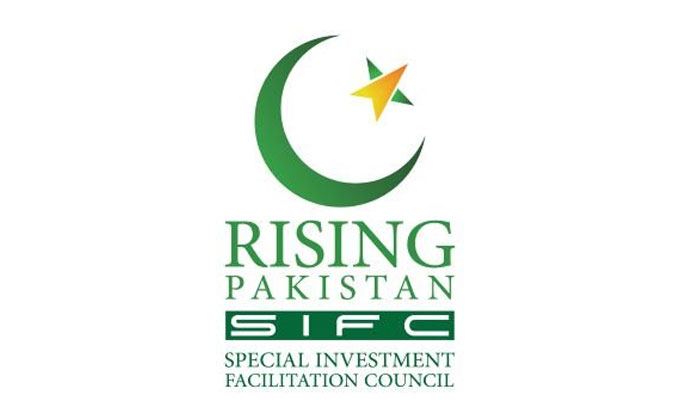Road to SIFC
As Prime Minister Shehbaz Sharif’s government takes charge amid the worst economic downturn in Pakistan’s history, the future of an investment-starved country remains the biggest challenge for the foreseeable future.
For all practical purposes, Pakistan’s economy remains at a standstill, driven by lacklustre growth and easily overwhelmed by a host of challenges. In brief, the economy remains simply flat.
In this lacklustre environment, Pakistanis have for months debated the utility or not of pursuing investments led by the Special Investment Facilitation Council (SIFC). The council has been the proverbial talk of the town, formally bringing together Pakistan’s top civil and military leaders on a common platform.
And its principal focus remains embedded in providing agricultural land in central and southern Pakistan to prospective investors from the oil-rich Middle East. For the moment across Pakistan, a host of players have questioned the SIFC as a game changer to lift future prospects.
But few have stepped ahead to welcome the SIFC as an alternative to steer the country out of its immediate economic crisis.
As this debate continues, Pakistan is urgently in need of a long-term plan to carry the country away from recurring economic crises.
Given Pakistan’s history, meeting the challenge will come about not just through the creation of another platform as in the SIFC. On the contrary, the eventual outcome on this front must emerge from carving out a road map through a series of reforms aimed at transforming Pakistan.
For Pakistan, there are indeed valuable lessons to be learnt from the country’s prior experience with the China-Pakistan Economic Corridor or CPEC. For instance, raising expectations at the outset with an estimated inflow of more than $60 billion in Chinese investments was indeed a blunder.
The Pakistani public’s hopes of witnessing such a staggering investment figure quickly led to unbridled pessimism. The lesson, if one was to be learnt from that exercise, was vitally just one – that talking up an initiative through a vast dollar sum runs the risk of having to deliver it quickly. In Pakistan’s case, seeking up to $50 billion or more under the SIFC, as spelt out by the caretaker government was indeed a colossal blunder.
As for the future of projects under the SIFC, two interrelated initiatives will be vital for its success.
First, Pakistan must strive to open the doors for domestic investors in the agriculture sector as it lays the ground for the inclusion of foreign investors. This is an area that has remained neglected for long. Domestic investors armed with funds to bankroll investments in this area including the introduction of newer technologies will help finance a key gap surrounding Pakistan’s farm sector.
Eventually, there is a chance for Pakistan to make investments more popular in agriculture, which remains central to the country’s economic health. There is also a chance of the benefits including a rise in the production of food commodities domestically, helping to reduce dependence on food imports.
On the other hand, opening up parts of the agriculture sector to landless peasants will inspire fresh popular confidence in the future of Pakistan. This too has been a much neglected area. The choice of arming landless peasants with land potentially could mark the first step towards battling afresh the largely neglected incidence of rural poverty.
Together, these two steps as a precursor to the SIFC could lift popular confidence in SIFC and strengthen the argument for foreign investors to take stakes in Pakistan.
Going forward, the new government needs to squarely re-consider its economic priorities. Amid the recent and much-heated election campaign, promises of large spending on future infrastructure projects, notably from leaders of the PML-N, seemed only hollow in the face of the prevailing challenges.
At a time when Pakistan faces an unprecedented crisis surrounding its food security, building expensive new train lines or highways or other elements of infrastructure must remain on hold.
In Punjab, newly appointed Chief Minister Maryam Nawaz’s promise of building five new IT cities or delivering an air ambulance service were examples that were devoid of deep thinking over Pakistan’s prevailing economic challenges. Punjab remains Pakistan’s bread basket, though its ability to deliver on the country’s food needs remains behind its potential. Rather than new infrastructure projects, the province needs to focus on revitalizing its agricultural resources in support of Pakistan’s overall well-being. This must be done through initiatives such as reviving the provincial agricultural extension services, revitalizing the irrigation network and ensuring the delivery of quality seeds and fertilizers to farmers.
Ultimately, Pakistan with a population of more than 240 million people – a country surrounded with major economic risks – needs to move rapidly to secure its future. That requires a rethinking of economic priorities that have run the country almost aground. Breathing life into the SIFC must be preceded by a refocus on food security, long neglected in Pakistan.
The writer is an Islamabad-based journalist who writes on political and economic affairs. He can be reached at: farhanbokhari@gmail.com
-
 Princess Beatrice, Eugenie Resort To Begging Sarah Ferguson: 'It'll Bring Disaster For The Whole Family'
Princess Beatrice, Eugenie Resort To Begging Sarah Ferguson: 'It'll Bring Disaster For The Whole Family' -
 Jenny Slate Hails Blake Lively Amid Lawsuit Against Justin Baldoni
Jenny Slate Hails Blake Lively Amid Lawsuit Against Justin Baldoni -
 Sophie Wessex Shares 'frustration' From Early Days In Royal Family
Sophie Wessex Shares 'frustration' From Early Days In Royal Family -
 Jason Momoa's Aquaman Unseen Snap Revealed
Jason Momoa's Aquaman Unseen Snap Revealed -
 Prince Harry Taught Only Way King Charles 'will Take Him Seriously'
Prince Harry Taught Only Way King Charles 'will Take Him Seriously' -
 Meghan Markle’s Reaction To UK Talks With Prince Harry Comes To The Forefront: ‘Leaving Me?’
Meghan Markle’s Reaction To UK Talks With Prince Harry Comes To The Forefront: ‘Leaving Me?’ -
 Taylor Swift Slams Justin Baldoni In Explosive Text Messages, Court Filing Reveals
Taylor Swift Slams Justin Baldoni In Explosive Text Messages, Court Filing Reveals -
 Blake Lively’s Drops New Allegations Against Justin Boldoni About Birth Scene
Blake Lively’s Drops New Allegations Against Justin Boldoni About Birth Scene -
 Andrew's Reasons For Giving Sarah Ferguson A Rent-free Home For 30 Years After Divorce Finally Finds An Answer
Andrew's Reasons For Giving Sarah Ferguson A Rent-free Home For 30 Years After Divorce Finally Finds An Answer -
 Charlie Puth Reveals Wake-up Moment That Made Him Quit Alcohol
Charlie Puth Reveals Wake-up Moment That Made Him Quit Alcohol -
 Meghan Trainor Welcomes Baby Girl Mikey Moon Trainor And Turns Emotional
Meghan Trainor Welcomes Baby Girl Mikey Moon Trainor And Turns Emotional -
 Meghan Markle Would Not 'hide Away' From UK For Harry's Sake
Meghan Markle Would Not 'hide Away' From UK For Harry's Sake -
 Why Keith Urban's Daughters Are Avoiding His Rumored Girlfriend? Source
Why Keith Urban's Daughters Are Avoiding His Rumored Girlfriend? Source -
 Sarah Ferguson Led Andrew To Jeffrey Epstein: ‘She Wanted Him To Ask For More Money’
Sarah Ferguson Led Andrew To Jeffrey Epstein: ‘She Wanted Him To Ask For More Money’ -
 Blake Lively Claimed Justin Baldoni 'made A Monster' Of Her, Court Docs Reveal
Blake Lively Claimed Justin Baldoni 'made A Monster' Of Her, Court Docs Reveal -
 Prince William Accused Of 'harsh Decisions' Over Disgraced Royal
Prince William Accused Of 'harsh Decisions' Over Disgraced Royal




